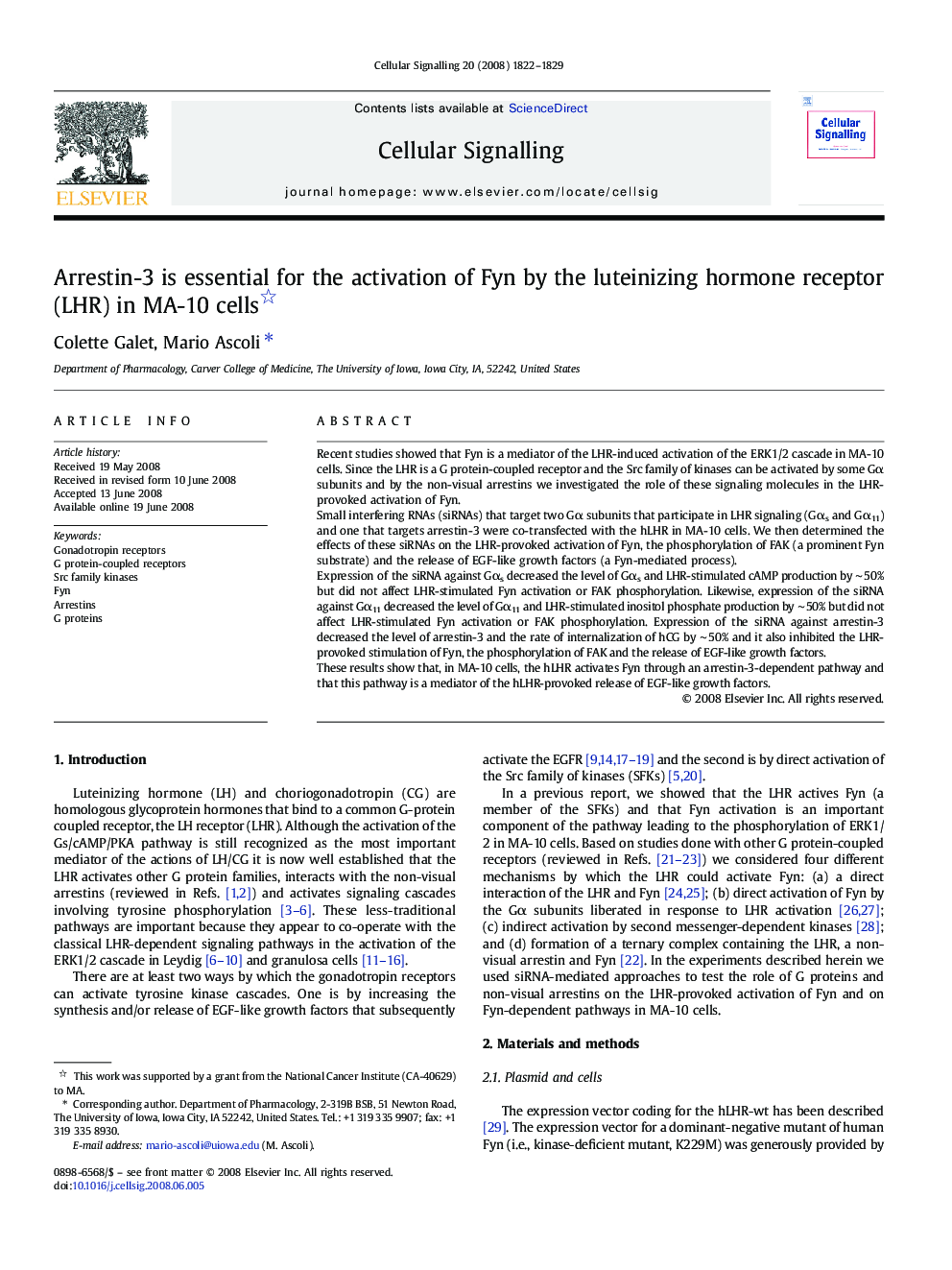| Article ID | Journal | Published Year | Pages | File Type |
|---|---|---|---|---|
| 1964221 | Cellular Signalling | 2008 | 8 Pages |
Recent studies showed that Fyn is a mediator of the LHR-induced activation of the ERK1/2 cascade in MA-10 cells. Since the LHR is a G protein-coupled receptor and the Src family of kinases can be activated by some Gα subunits and by the non-visual arrestins we investigated the role of these signaling molecules in the LHR-provoked activation of Fyn.Small interfering RNAs (siRNAs) that target two Gα subunits that participate in LHR signaling (Gαs and Gα11) and one that targets arrestin-3 were co-transfected with the hLHR in MA-10 cells. We then determined the effects of these siRNAs on the LHR-provoked activation of Fyn, the phosphorylation of FAK (a prominent Fyn substrate) and the release of EGF-like growth factors (a Fyn-mediated process).Expression of the siRNA against Gαs decreased the level of Gαs and LHR-stimulated cAMP production by ∼ 50% but did not affect LHR-stimulated Fyn activation or FAK phosphorylation. Likewise, expression of the siRNA against Gα11 decreased the level of Gα11 and LHR-stimulated inositol phosphate production by ∼ 50% but did not affect LHR-stimulated Fyn activation or FAK phosphorylation. Expression of the siRNA against arrestin-3 decreased the level of arrestin-3 and the rate of internalization of hCG by ∼ 50% and it also inhibited the LHR-provoked stimulation of Fyn, the phosphorylation of FAK and the release of EGF-like growth factors.These results show that, in MA-10 cells, the hLHR activates Fyn through an arrestin-3-dependent pathway and that this pathway is a mediator of the hLHR-provoked release of EGF-like growth factors.
